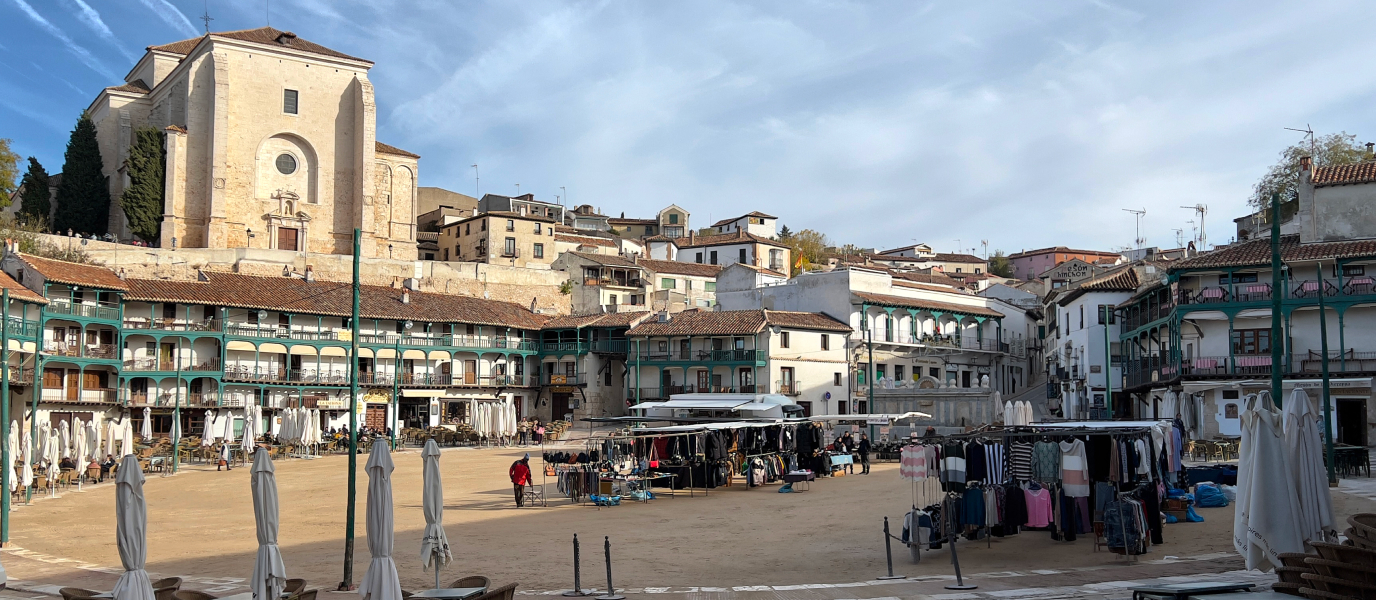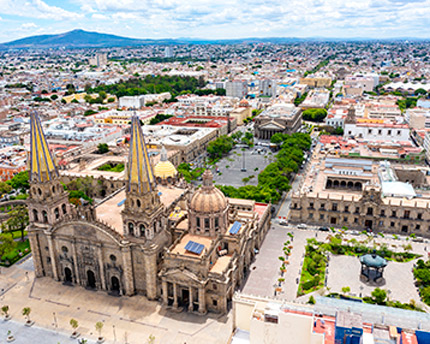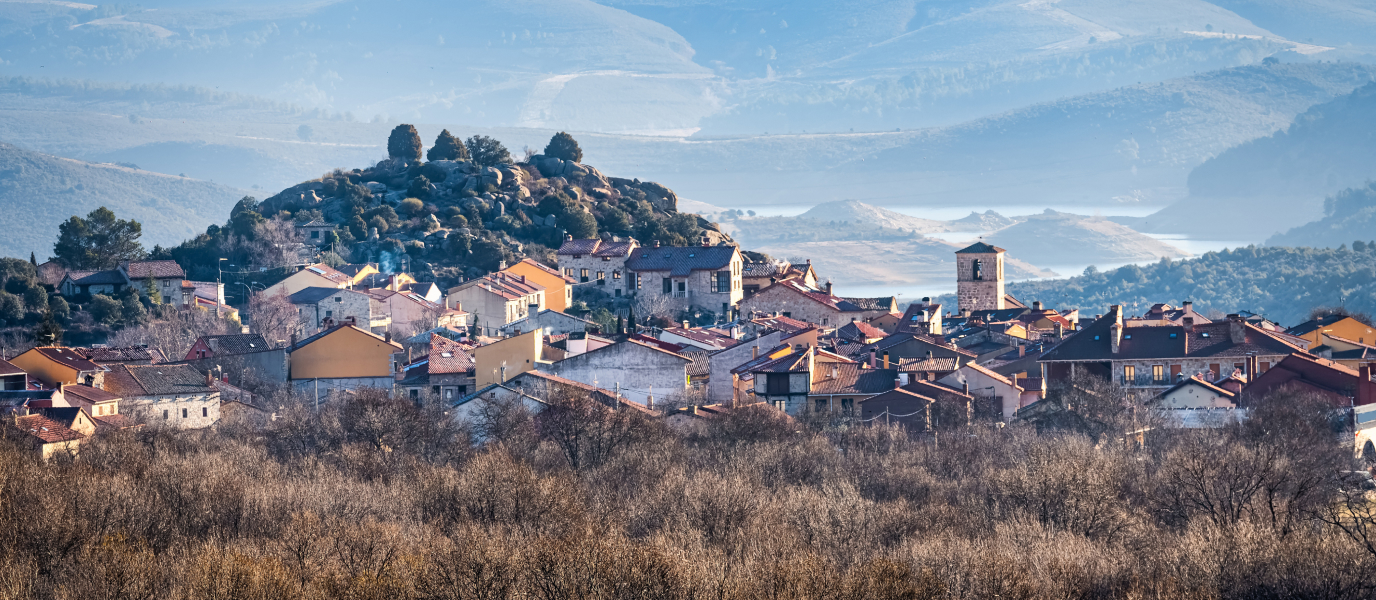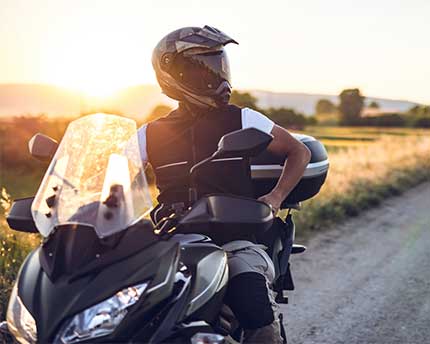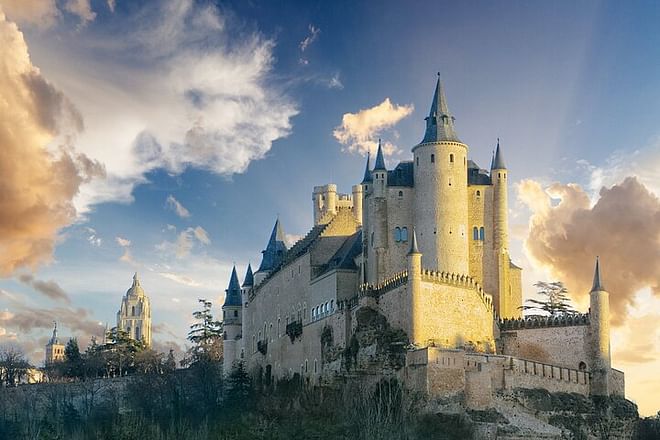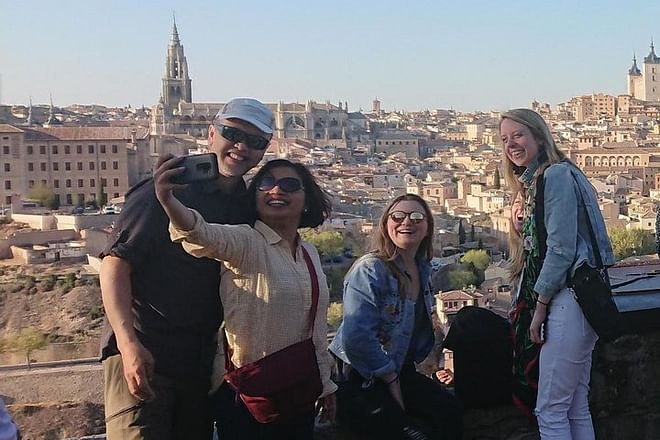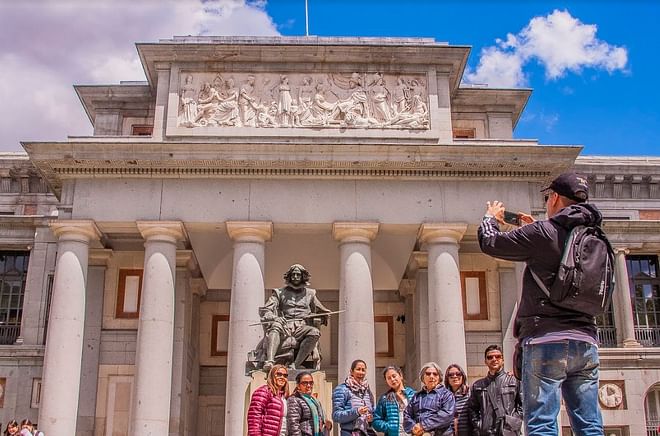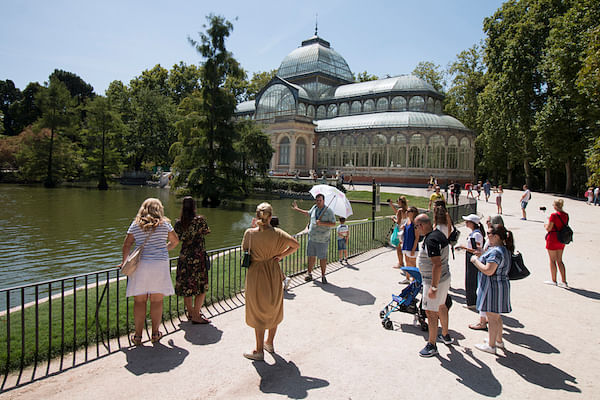The small town of Chinchón is sandwiched in between the Jarama and Tagus rivers to the south-east of the capital and is one of the most popular places for a short trip among local people, together with the Monastery of San Lorenzo de El Escorial, Aranjuez, Toledo and Segovia. And it’s easy to see why: Chinchón has great food, is close to Madrid, boasts rich heritage and, what’s more, offers some of the peace and quiet that is often difficult to find in great metropolises.
In actual fact, there are a whole host of reasons to visit Chinchón. So, before you head down south, we’re going to fill you in on the places that you can’t miss in this beautiful town in Madrid province.
Chinchón’s Plaza Mayor
The town’s trademark is its main square and possibly the first thing you’ll share on Instagram. This beautiful plaza was originally a simple esplanade situated on the outskirts of the town, which was used for hosting markets and cattle fairs. It wasn’t until the fifteenth century when the first buildings began to be built, although it wasn’t completely closed off and given its characteristic oval shape until the seventeenth century.
In contrast to the regularity and ordered design of Madrid’s Plaza Mayor, that of Chinchón stands out precisely for its apparent sense of anarchy. Seemingly built in an almost spontaneous manner, porticos are held up by green-painted upright supports and wooden footings and the 234 balconies or “clearings” stand alongside one another at different heights with a notable lack of symmetry. The same occurs with the roofs, which seem to have been built without any prior planning.
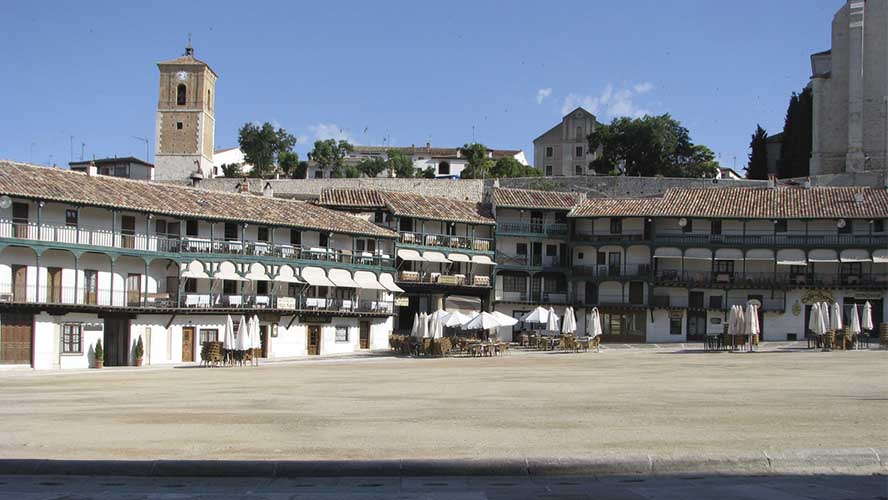
The mostly three-storey buildings that make up Chinchón’s Plaza Mayor house a wide range of restaurants, which transform their balconies into improvised dining rooms. Similarly, the porticos conceal shops selling typical local foods, including different specialities such as anise, garlic and chorizo and a selection of traditional confectionary. Visitors who are yet to acquaint themselves with the most popular sweet treats will most likely be surprised to see patisseries stocked with tetas de novicia and pelotas de fraile.
Besides this, the plaza has historically been used as the setting for a diverse range of popular events, as well as acting as a main square in the most Baroque sense of the word. Hence it has been used as a corral de comedias—or a theatrical courtyard—and a bullfighting arena, and hosted autos sacramentales—a form of dramatic literature unique to Spain—and cane jousting tournaments. In more recent times, it has been used as a location for films such as King of Kings, Circus World and Around the World in 80 Days.
The Castle of Chinchón
Barely 700 metres from Plaza Mayor is another of the town’s main sights: the Castle of the Counts of Chinchón (Calle del Castillo, no number). Despite its name—which evidently comes from its physical form—it is not actually a castle but a palace residence used for 200 years by the Counts of Chinchón. Its lack of actual defensive elements—even taking into account its turrets, moat and drawbridge—is what ultimately determines that it is not classified as a castle.
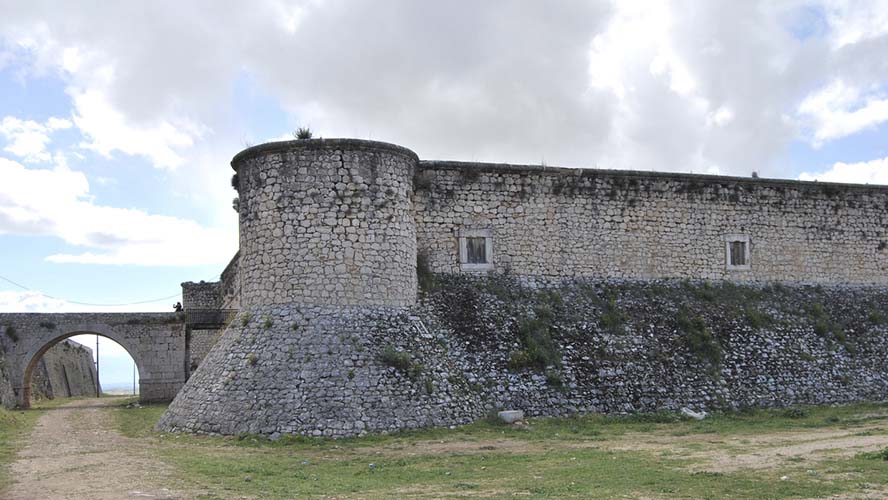
Unfortunately, you cannot enter inside as it is a private property and, at the same time, is in quite poor condition. During the War of the Spanish Succession and the Spanish War of Independence it suffered considerable damage, as well as undergoing notable modifications in order to convert it into a liquor factory. That said, part of its original courtyard and rooms such as the vaulted cistern, the stables and a section of the underground gallery have been preserved.
In any case, what is really worth seeing is its façade, which is clearly influenced by the Italian Renaissance and proudly exhibits the shield of Diego Fernández de Cabrera y Bobadilla, III Count of Chinchón, and the marvellous views of the urban area.
The Clock Tower
Although its narrow structure can be made out from Plaza Mayor, towering above the roofs, we recommend walking to it in order to see it up close. It is the only vestige that remains from the Church of Our Lady of Grace, which was destroyed by the French in 1808. It stands out for its interesting combination of building material, with an initial body of rubble masonry, followed by a band of hewn stone and, finally, brick.
The Church of Our Lady of the Assumption
A popular saying goes that Chinchón “has a tower without a church and a church without a tower”, which is undoubtedly an accurate definition of the town. The church without a tower is that of Our Lady of the Assumption, on whose altar you can see a painting by Francisco de Goya y Lucientes, which, reputedly, was given to the parish by the painter himself after it was burnt down during the Spanish War of Independence. The fact that Goya’s brother was the parish priest naturally played an important part in this generous gift.
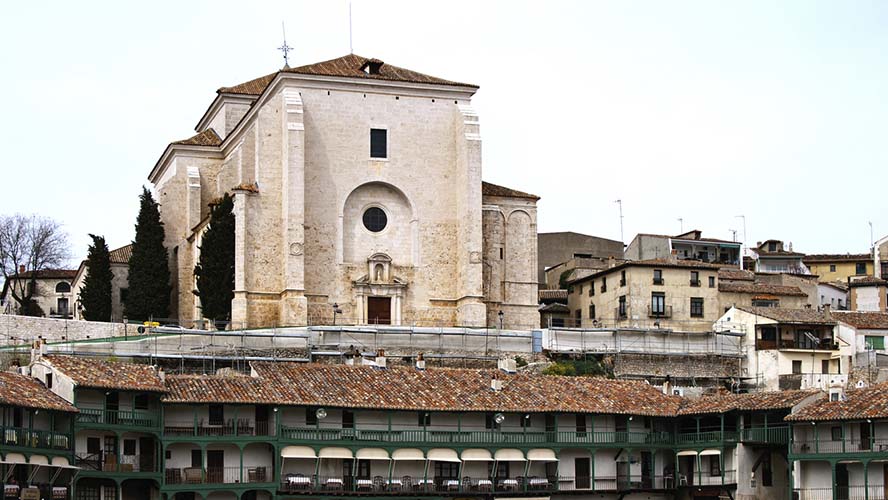
Teatro Lope de Vega
Right between the Clock Tower and the Church of Our Lady of the Assumption is a large theatre that is of great significance for the town, as the career of one of the most important figures to have been born in Chinchón, that of José Sacristán, began there. The Goya Award–winning actor and the winner of two Silver Shells from the San Sebastián Film Festival claims that his first positive encounter with acting was at the theatre. Today, as a matter of fact, Sacristán sponsors the town’s local theatre competition. Inside the building, we recommend pausing in front of the painting that adorns its curtain, the work of Luis Muriel, who renders a beautiful view of the town’s urban area.
We’re sure you’ll agree that Chinchón is a perfect place for a quick break from the capital.




































































